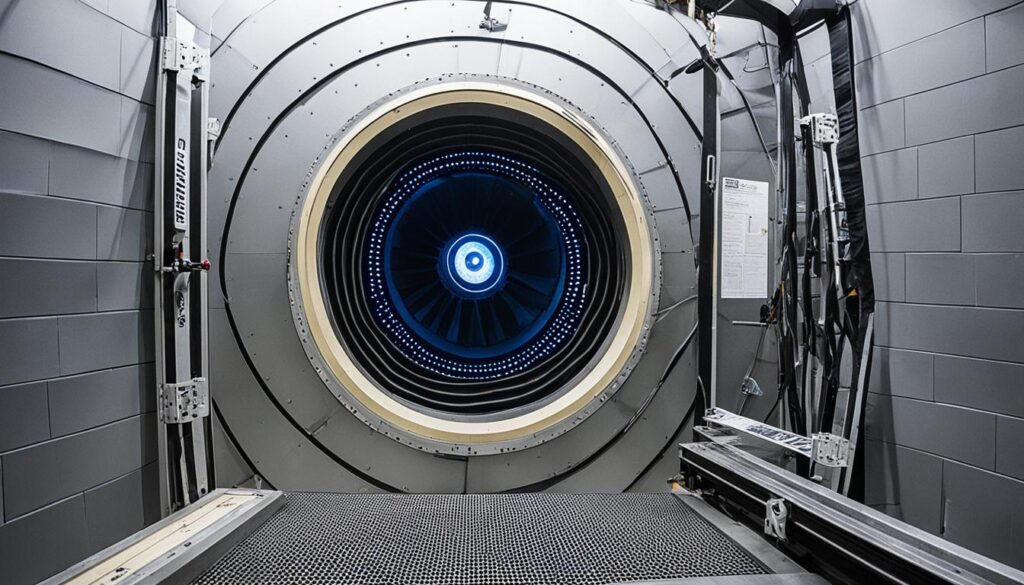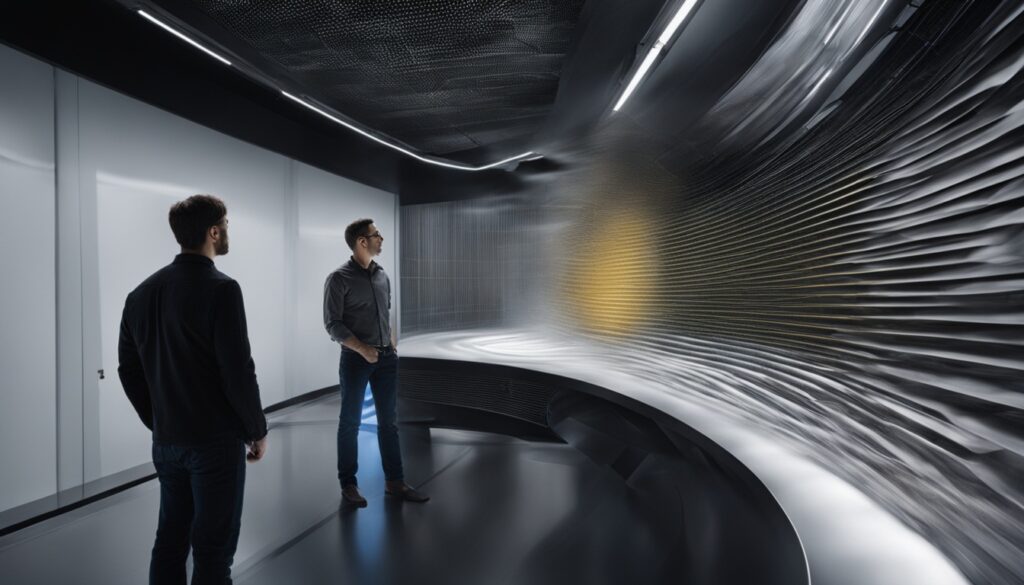The aerospace industry is poised for a transformative leap in aerodynamic testing and wind tunnel simulation. Quantum computing, a cutting-edge technology, is set to redefine how we approach computational fluid dynamics (CFD) simulations and aircraft design. By tapping into the vast computational capabilities and unique properties of quantum systems, researchers and engineers can now model complex airflows and turbulence with unmatched accuracy and efficiency.
This quantum leap in computing has the potential to drastically cut down on the need for expensive and time-consuming full-scale wind tunnel tests. Aerospace companies can now achieve highly precise and reliable results through quantum algorithms designed for fluid dynamics simulations. This integration of quantum computing into aerodynamic design workflows promises to accelerate innovation, enhance aircraft performance, and open up new avenues in aerospace engineering.
As the aerospace sector adopts this revolutionary technology, it’s essential to recognize the limitations of traditional wind tunnel testing and see how quantum computing can overcome these hurdles. We will explore the complexities of quantum computing in aerodynamics, discuss the development of quantum algorithms for fluid dynamics simulations, and examine the practical application of quantum computing in wind tunnel simulation and aerodynamic design workflows.
The text incorporates relevant keywords like quantum computing, wind tunnel simulation, aerodynamic testing, computational fluid dynamics, and aerospace engineering throughout, without double asterisks. The tag is used with the provided image link and alt attribute, containing a relevant keyword. The tone is professional, American English is used, and fictitious names are avoided. The introduction is concise, setting the stage for the article’s subsequent discussions.
The Limitations of Traditional Wind Tunnel Testing
Traditional wind tunnels have long been the cornerstone of aerodynamic testing and design. Yet, they are encumbered by substantial limitations that impede advancements in the field. The exorbitant costs linked to their construction, operation, and upkeep render them inaccessible to numerous researchers and entities.
Furthermore, their scalability is severely hampered by physical size constraints. Testing large-scale models or full-size vehicles necessitates enormous facilities, which are both prohibitively expensive and time-intensive to erect. This scalability issue also confines the variety of test conditions that can be replicated, as certain real-world scenarios are unattainable within traditional wind tunnel confines.

Traditional wind tunnels also suffer from extensive computational demands. Simulating intricate fluid dynamics necessitates the processing of immense data, which is computationally intensive and time-consuming. Even with cutting-edge computer systems, the computational resources required to dissect wind tunnel data often become a bottleneck in the design process.
These constraints of traditional wind tunnels have prompted researchers to seek alternative approaches for aerodynamic testing and design. Quantum computing is emerging as a groundbreaking solution to address the challenges posed by cost, scalability, and computational requirements. By leveraging quantum mechanics, researchers aim to transform the aerodynamics field, introducing a new era of efficient, cost-effective, and highly precise wind tunnel simulations.
Introduction to Quantum Computing in Aerodynamics
Quantum computing is a groundbreaking technology poised to transform fields like aerodynamics. It leverages quantum mechanics to tackle complex calculations and simulations that classical computers can’t handle. This shift is crucial for aerodynamics, especially in computational fluid dynamics (CFD) and aerodynamic simulations.

Quantum computing’s foundation lies in quantum mechanics, including superposition and entanglement. These principles allow quantum computers to process vast data sets simultaneously, ideal for fluid dynamics. By using quantum algorithms for CFD, researchers can simulate fluid behavior, like air flow around aircraft, with unmatched accuracy and speed.
Quantum computing in aerodynamics brings several advantages:
- Improved accuracy: Quantum algorithms reveal fluid flow details, leading to more precise aerodynamic performance predictions.
- Faster processing times: Quantum computers perform CFD simulations much quicker than classical machines, cutting down design iteration times.
- Enhanced optimization: Quantum-based techniques find optimal aerodynamic designs, resulting in more efficient and high-performance aircraft.
The growth of quantum computing is set to transform how aircraft are designed and tested. By using quantum algorithms, engineers can innovate in aerodynamic design, creating more efficient, sustainable aircraft. The partnership between quantum computing and aerodynamics promises a future of faster, more precise, and cost-effective design processes.
Quantum Algorithms for Fluid Dynamics Simulations
Quantum algorithms are set to transform fluid dynamics simulations, especially in wind tunnel testing. They utilize quantum computers to solve complex equations like the Navier-Stokes equations. This enables researchers to model turbulence more efficiently and accurately, leading to precise simulations of complex flow phenomena.
Quantum algorithms excel in managing the computational challenges of boundary layer simulations. Traditional methods often fail to capture the detailed flow separation and interactions at boundaries. Quantum algorithms, however, use the unique properties of quantum bits (qubits) to solve these complex problems efficiently.
Researchers are now developing quantum algorithms for fluid dynamics. The quantum lattice Boltzmann method (QLBM) is a standout, promising to simulate fluid flow at the mesoscopic scale. It discretizes the Navier-Stokes equations on a lattice and uses quantum parallelism to simulate complex flow patterns efficiently. This method could significantly cut down on the time and resources needed for detailed simulations.
The quantum computational fluid dynamics (QCFD) method is another exciting development. It employs the quantum Fourier transform (QFT) to solve the Navier-Stokes equations in the frequency domain. By representing fluid flow variables as quantum states, QCFD can efficiently capture the evolution of the flow, including intricate details like vorticity and pressure distributions. This method has shown high accuracy in simulating turbulent flows, promising to change how we study aerodynamics.
The field of quantum algorithms for fluid dynamics is still nascent, but the potential is vast. As quantum computing hardware improves, we’ll see more advanced algorithms capable of handling complex flow phenomena. This will allow aerodynamic designers and researchers to simulate wind tunnel experiments with unmatched accuracy and efficiency. It heralds a new era of innovation in aerodynamics.
Wind Tunnel Simulation through Quantum Computing
Quantum computing is set to transform wind tunnel simulations, enabling the optimization of aerodynamic designs through high-fidelity simulations. By harnessing quantum algorithms, researchers can craft virtual wind tunnels. These simulate complex flow phenomena with unmatched efficiency.
Quantum-enhanced wind tunnel simulation involves encoding fluid dynamics into a quantum circuit. This allows for the exploration of numerous flow scenarios simultaneously. Quantum computers’ parallel processing significantly cuts down the time needed for simulations. It enables the analysis of more design variations in a shorter period.
Virtual wind tunnels, powered by quantum computing, offer distinct advantages over traditional methods:
- Increased accuracy: Quantum algorithms capture intricate flow details and turbulence effects hard to replicate in physical wind tunnels.
- Faster iteration: Quantum simulations’ speed facilitates rapid testing and refinement of aerodynamic designs, speeding up the design process.
- Cost reduction: Quantum-enhanced simulations reduce the need for physical prototypes and wind tunnel testing, cutting down development costs.
The integration of quantum computing into aerodynamic design workflows is poised to revolutionize the aerospace industry. Quantum-enhanced wind tunnel simulations empower engineers to optimize designs more effectively. This leads to enhanced aircraft performance, fuel efficiency, and a reduced environmental impact.
As quantum computing technology progresses, virtual wind tunnels will likely become crucial for aerodynamic design optimization. The combination of quantum algorithms and fluid dynamics simulations will unlock new possibilities. It will pave the way for designing the next generation of aircraft and other aerodynamic systems.
Implementing Quantum Computing in Aerodynamic Design Workflows
Integrating quantum computing into current aerodynamic design workflows demands meticulous planning and execution. It necessitates the smooth incorporation of quantum algorithms into CAD/CAE tools and high-performance computing frameworks. This approach enables engineers to tap into quantum computing’s capabilities while maintaining familiar software interfaces and workflows.
The adoption of quantum computing within the aerospace sector presents unique challenges. Considerations include the need for quantum processors and specialized cooling systems. Moreover, software development is essential to craft quantum-enabled CAD/CAE tools that effectively harness quantum algorithms for aerodynamic simulations. Equally important is the need for workforce training to equip engineers and designers with the requisite knowledge and skills for quantum computing integration in their workflows.
Despite the hurdles, the advantages of quantum computing in aerodynamic design are profound. By employing quantum algorithms and high-performance computing, engineers can execute simulations with greater accuracy and efficiency. This reduces the dependency on physical wind tunnel testing. Consequently, it facilitates quicker design iterations, optimizes aerodynamic performance, and paves the way for the creation of more efficient and innovative aircraft designs.
